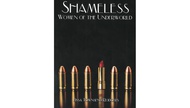For 44 years, before it was imploded to make way for the Venetian, the Sands ruled the Strip. From 1952 to 1996, the glamorous casino was at the center of Las Vegas’ constant evolution, hosting the likes of John F. Kennedy and the Rat Pack. In his new book, At the Sands: The Casino That Shaped Classic Las Vegas, Brought the Rat Pack Together, and Went Out With a Bang, Las Vegas historian David G. Schwartz chronicles the days of the illustrious resort.
We caught up with Schwartz, who serves as UNLV’s associate vice provost for faculty affairs and has also written a history of gambling (Roll the Bones), a biography of Caesars Palace/Circus Circus creator Jay Sarno (Grandissimo) and a history of Atlantic City (Boardwalk Playground), for a chat about his latest published project.
Las Vegas has such a storied history of classic casinos. Why did you choose to spotlight the Sands? It’s really the quintessential classic Vegas casino. If you think about classic Vegas, you usually think about the Rat Pack, and that leads you to the Sands.
How did the Rat Pack become associated with the Sands? Pretty early on, in 1953, Frank Sinatra got an ownership share in the casino, so he was going to be performing there a lot. Doing the research for the book, I learned that Sinatra had actually been trying to build or buy a casino in Vegas for a while. … Basically, the idea was taking Frank—together with Dean Martin and Sammy Davis Jr, who were also performing there … [and] putting the three of them together. That would be the biggest event in show business history.
Las Vegas is notorious for imploding its past. How did you uncover information about a long-gone locale? Luckily, UNLV Special Collections & Archives has a ton of information about the Sands, so part of it was going through and learning what I could from those. Another part was looking at newspapers and other periodicals. And another part was interviewing people who were there. I used a lot of oral history interviews that were already done.
How many people are still alive from that era? From that era, there’s very few, but [the] casino kept going up into the ’90s. So I talked to more people who were sort of at the other end of it. It’s kind of nice to give it some continuity.
Do you have any favorite anecdotes from the book? It’s fascinating how they actually renovated parts of the property to accommodate [Saudi high roller Adnan Khashoggi]. They had the helicopter pad; they added a whole separate phone system that they only used when he was there. It was a huge thing when he came. He lost $22 million there one year—and that’s in like ’79; that’s a lot of money. … There actually were rumors that he was going to buy the Sands, but I don’t think he could have passed the Gaming Control Board, because he was involved in a lot of stuff.
What is the legacy of the Sands today? The idea of entertainment as being important. [The casino] really took that Manhattan nightclub vibe and put it into Vegas. … It really shows the evolution of Las Vegas, where it went from the entertainment to the Hughes era, which was much more by the book, to the Adelson era, which is the rise of conventions.
If you could go back in time and visit the Sands, what would you do there? It’d just be fun to spend a night at the Copa and see whether it lives up to the hype. It’d be fun seeing Count Basie and Frank Sinatra at the Copa.
At the Sands By David G. Schwartz, $20. atthesands.com








